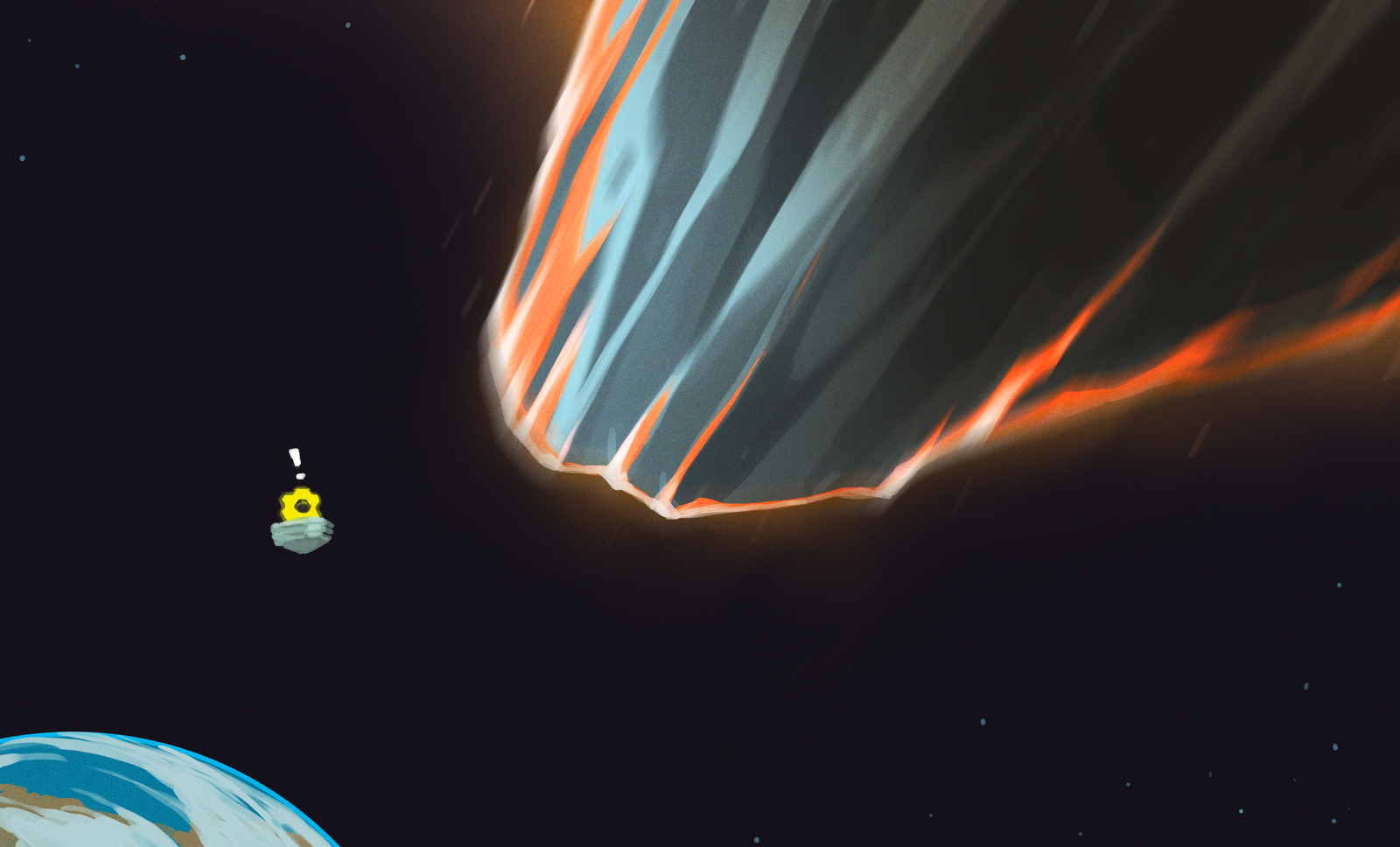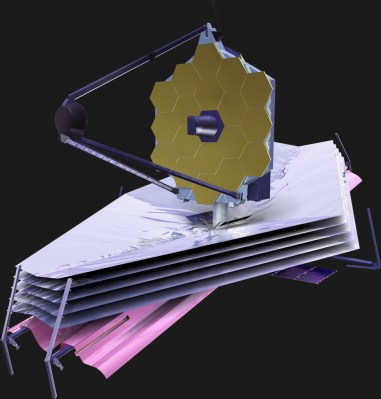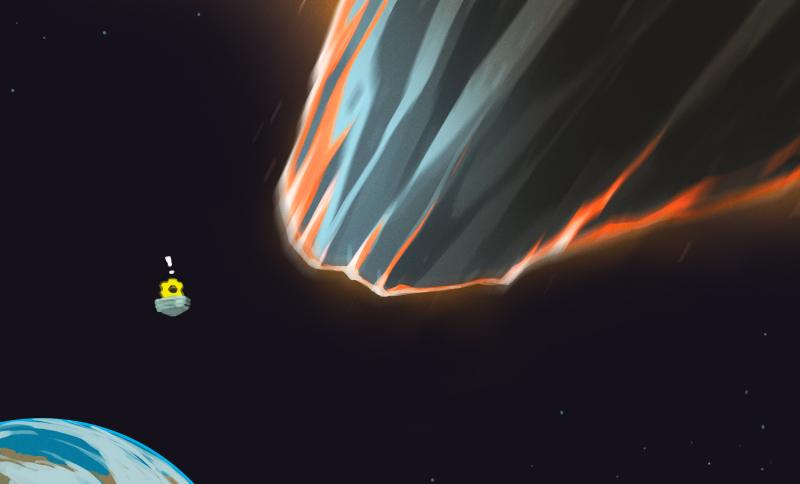
In all likelihood, asteroid 2024 YR4 will slip silently past the Earth. Based on the data we have so far, there’s an estimated chance of only 2.1% to 2.3% that it will collide with the planet on December 22nd, 2032. Under normal circumstances, if somebody told you there was a roughly 98% chance of something not happening, you probably wouldn’t give it a second thought. There’s certainly a case to be made that you should feel that way in regards to this particular event — frankly, it’s a lot more likely that some other terrible thing is going to happen to you in the next eight years than it is an asteroid is going to ruin your Christmas party.
That being said, when you consider the scale of the cosmos, a 2+% chance of getting hit is enough to raise some eyebrows. After all, it’s the highest likelihood of an asteroid impact that we’re currently aware of. It’s also troubling that the number has only gone up as further observations of 2024 YR4’s obit have been made; a few weeks ago, the impact probability was just 1%. Accordingly, NASA has recently announced they’ll be making time in the James Webb Space Telescope’s busy scientific schedule to observe the asteroid next month.
So keeping in mind that we’re still talking about an event that’s statistically unlikely to actually occur, let’s take a look at what we know about 2024 YR4, and how further study and analysis can give us a better idea of what kind of threat we’re dealing with.
An Unexpected Visitor
Officially, 2024 YR4 was discovered on December 27th, 2004 by the Asteroid Terrestrial-impact Last Alert System (ATLAS), but by that time we had already dodged a potential impact. It turns out that the asteroid had come within 828,800 kilometers (515,000 miles), or around two times the distance from the Earth to the Moon, on December 25th without anyone realizing.
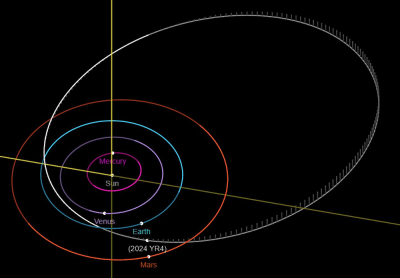
All of the observations of the asteroid made since its discovery have therefore been made while the object is moving away from the planet and back into deep space. This is a less than ideal situation when you consider that the asteroid is estimated to be between 40 to 90 meters (130 to 300 ft) in diameter.
With each passing day, it becomes more difficult to track and resolve 2024 YR4, and it’s currently estimated that observing it with ground-based telescopes will no longer be possible beyond April.
That is, until 2028. As you might have put together by now, 2024 YR4 is in such an orbit that it comes within close proximity of Earth every four years. If current orbital projections hold true, during the summer of 2028, the asteroid will be close enough again that we can observe it on the way towards us.
That will include a fly-by of Earth in early December before it swings back out of range. Hopefully by that time we’ll have collected enough data to know whether or not we’ll need to brace for impact the next time it swings by our neighborhood.
Deflect, or Evacuate?
As far as potentially dangerous Near Earth Objects (NEOs) go, 2024 YR4 is about as ideal as they get. While it did sneak up on us in 2024, now we know it’s on a fairly predictable schedule and there’s enough time that we could actually do something about it if the chance of impact gets high enough to take it more seriously. In 2028, we’ve even got a chance to deflect it as it zooms past Earth.
That would have been science fiction a few years ago, but after NASA’s successful DART demonstration mission, we now know it’s possible to significantly alter the orbit of an asteroid simply by ramming a spacecraft into it at high velocity. The target asteroid in that test was much larger than 2024 YR4, with a diameter of 177 meters (581 ft). Yet the head-on impact of the 500 kg (1,100 lb) DART spacecraft was able to slow it down enough to make a noticeable change in its orbit.
Given how close 2024 YR4 would be passing by Earth, it’s not hard to imagine that a spacecraft with several times the mass of DART could be put on a collision course with the asteroid in 2028. Even if such an impact would not be enough to entirely prevent a collision with 2024 YR4, if applied carefully, it could certainly be sufficient to move the calculated point of impact.
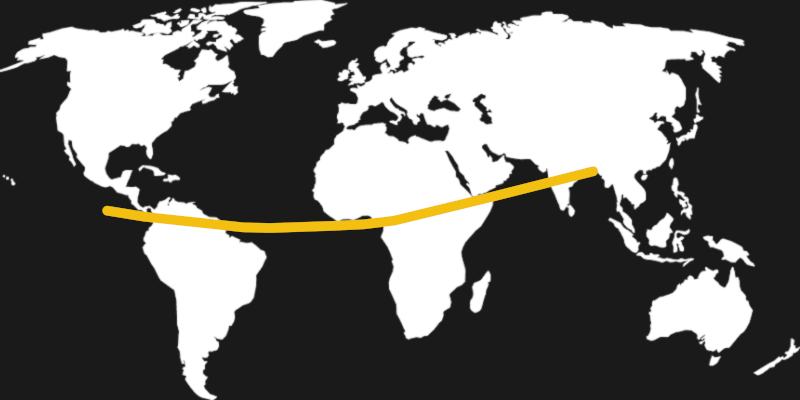
But would such a mission even be necessary? Current estimates put around half of the potential impact points for 2024 YR4 over the ocean. Even where the path of the asteroid does cross over land, most of it is sparsely populated. The biggest risks to human life would be in Nigeria and India, but the chances of a direct hit over either area is particularly remote, especially given the estimated blast radius of 50 km (31 miles).
Unless updated orbital data for 2024 YR4 indicates that it’s going to directly impact one of these densely populated areas, the most cost effective approach may be to simply move as many people out of the impact area as possible. While an evacuation of this scale would still be a monumental task, we’d at least have several years to implement the plan.
Bringing Out the Big Guns
While the chances are still excellent that 2024 YR4 will zip harmlessly past our Blue Marble in 2032, it’s not outside the realm of possibility that some big decisions might need to be made in the next few years. So how do we figure out how large of a threat this asteroid really is before it’s too late?
That’s where advanced space-bound observatories like the James Webb Space Telescope (JWST) come in. While our instruments on Earth soon won’t be able to see 2024 YR4, the JWST will not only be able to keep its gaze on the asteroid for longer, but the infrared observatory is uniquely suited for capturing critical data about its size and shape.
Up to this point, the size of 2024 YR4 has been estimated based on its visible appearance, but that can be misleading. It could be that only part of the asteroid is reflective, which would give the impression that its smaller than it actually is. But the JWST doesn’t rely on visible light, and instead can use its IR instruments to detect the heat being given off by the asteroid’s rocky surface.
With definitive data about the asteroid’s size, shape, and rotation, astronomers will be able to better model how 2024 YR4 is moving through space. That’s going to be key to figuring out whether or not that 2.3% chance of impact is going to go up or down — and if it does go up, will help narrow down exactly where the asteroid is likely to hit.
This articles is written by : Nermeen Nabil Khear Abdelmalak
All rights reserved to : USAGOLDMIES . www.usagoldmines.com
You can Enjoy surfing our website categories and read more content in many fields you may like .
Why USAGoldMines ?
USAGoldMines is a comprehensive website offering the latest in financial, crypto, and technical news. With specialized sections for each category, it provides readers with up-to-date market insights, investment trends, and technological advancements, making it a valuable resource for investors and enthusiasts in the fast-paced financial world.
